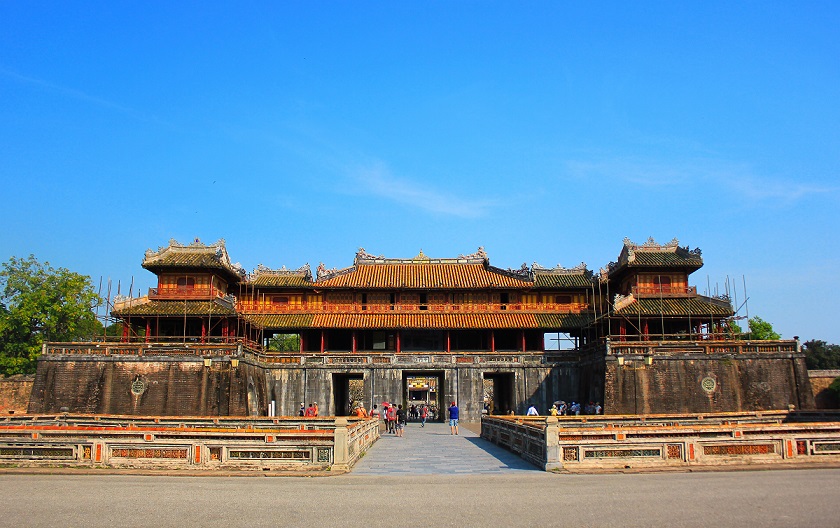
A Vietnam travel plan usually means urban visits to Ho Chi Minh and Hanoi, or the outlying beautiful locations of Halong Bay and Hoi An. However, tourists cannot afford to miss out on the most historical place of Vietnam, Hue, which resonates of stories of the medieval pre-Communist past.
Hue was established as the capital of the Vietnam in 1802 as the political, cultural and religious seat of the Nguyen dynasty until 1945. Today Hue is a combination of the Hue Citadel, the Imperial City, the Imperial Residence, the Forbidden Purple City and the Inner City, making this feudal city a place of great historical relevance. The purple-tinged stonework of the Hall of Supreme Harmony has perhaps given Hue the epithet of the “Forbidden Purple City”.
Outside Hue there are other historical monuments and ritual sites - the Van Mieu (Temple of Literature), the Dan Nam Giao (Esplanade of Sacrifice to the Heaven and Earth), the Ho Quyen (Royal Area), the Den Voi Re (Temple of the Roaring Elephant), and the Chua Thien Mu (Celestial Lady Pagoda).
Anytime during the dry months is a good time to visit Hue. However, if you can time your visit to coincide with the Hue Festival usually held in April, you can witness Vietnamese tradition and heritage in its true spirit.Generally, February to April is a good time, to avoid the hot, humid weather.
Hue is the best city to experience Vietnamese history, culture and tradition.
The Hue Citadel are the structure of four citadels that make the Capital City - Hoang Thanh /Imperial City that houses the royal palaces and shrines, Tu Cam Thanh / the Forbidden Purple City that was the former royal residence, Dai Noi / the Inner city and Tran Binh Dai. As it extends over a large area, you can take a taxi or hire a bicycle to explore the site.
The historical Thai Hoa Palace was the Royal Meeting and Ceremonial Hall, and is a popular tourist attraction today.
The Hue Antiques Royal Museum, formerly Khai Dinh Museum, houses an extensive collection of royal treasures. It is a must-visit, for the amazing oriental artefacts of the royal period.The museum showcases Vietnam’s handicraft, paintings, literary works, made by Hue artisans during the medieval period. These remarkable works use a wide range of materials such as gold, silver, jade, ivory, glass, stone, wood, leather, fabrics, paper, bamboo, rattan and terra cotta. The museum is a true combination of history, royalty and the region’s rich tradition of arts and crafts.
There are seven Royal Tombs near the city of Hue. Of these the tombs of Minh Mang, Tu Duc, and Khai Dinh are more popular with the tourists. These tombs are elaborate structures, and fine example of architectural fusion.
Thien Mu Pagoda is a towering 7-tiered temple perched on a hill overlooking the Perfume River. Also known as the Pagoda of the Celestial Lady, the temple dates back to the early 17th century. The temple has inspired many folk rhymes and is symbolic to Hue. It is a must-see for its architectural splendour and magnificence.
The The Mieu is a beautiful ancestral temple dedicated to the former rulers of the city, constructed by King Minh Mang in 1823. Highlights are the nine urns in front of the temple, dedicated to the royal ancestors.
The Thanh Toan Bridge is another dated historical construction visited for its architectural beauty. Visit at night when it is lit up and looks magnificent.
The Bach Ma National Park is a national park, rich in biodiversity that you may like to visit.
Royal Banquet dinners are a recent tourist attraction which allows you a retro look into the medieval culture of Hue dynasty. Dress up as Vietnamese royalty and dine on traditional dishes that have a Royal influence while you listen to traditional music.
A bike ride through the countryside lets you explore the tombs in the outlying areas and the picturesque landscape of the river, while you enjoy Hue cuisines and watch royal enactments.
A dragon boat cruise down the Perfume River is a fine way to see the region and traditional settlements. The river gets its name from the various orchards flanking the river banks that lend a flowery perfume to the river.
Visit the ancient Dong Ba Market and pick up some of the fresh Southeast Asian fruits you will not find elsewhere - custard apple, gac, or durian. Buy a Vietnamese conical hat and try to get your tour operator take you to those villages where conical hats and incense sticks are handmade.
Visit the Lang Co Beach to relax and cool off. However, get yourself a lifeguard, as the waters can get choppy.
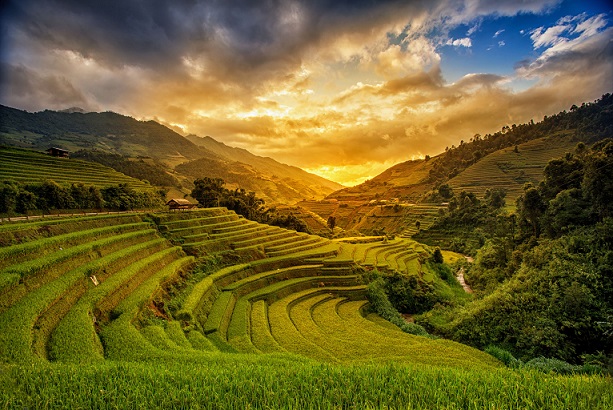
Located in northern Vietnam in the Lao Cai Province, Sapa’s iconic rice paddies and towering mountain ranges attract a diverse range of visitors throughout the year. The quiet mountain town is filled with diverse ethnic minority people and villages in the surrounding area.
A truly unique destination, 380km northwest of Hanoi, the Hoang Lien Son mountain range is vast and spreads throughout the town. A very popular place for trekking and hiking, Sapa is home to a rich culture, fascinating people and beautiful scenery. Be surrounded by natural beauty and indulge in Vietnamese life and culture.
As a mountain town with no airport, Sapa is accessible by road or train only. Catch the overnight train from Hanoi which takes around 8-9 hours and stops in Lao Cai. You will then need to travel another hour from Lao Cai station to reach Sapa. The other option is to travel by bus and is a faster alternative. Buses depart daily from Hanoi and take 6-7 hours.
Sapa is an extremely charming town and once you step out into the lush green fields and rice paddies, you’ll never want to leave. To make the most out of your time in northern Vietnam, here are eight great things to see and do in Sapa.
The highest mountain in Indochina, the trek to the peak of Fansipan mountain is not to be taken lightly. There are serval tour options that can be found in various hostels and hotels, offering one or two-day treks. You do need to be physically fit for the hike and have a high level of endurance. If this isn’t for you but you would still love to see the view from the top, there’s always the cable car. You can buy a return journey from the bottom and soak up the breathtaking views on the 20-minute cable car ride.
Thac Bac Waterfall also known as Silver Falls can be found less than 15km from the centre of Sapa. The waterfalls can be easily reached by car or motorbike. A serene and calming area, you’ll find incredible views along the journey.
There are several restaurants on the Sapa dining scene suitable for a wide range of budgets and requirements. Head for Cau May Steet, the main area for restaurants and cafes. The Moment Romantic Restaurant has a superb Vietnamese menu with a number of vegetarian options. Other popular spots for an evening meal include Rose Garden and Gerbera Restaurant.
A homestay in Sapa is a fantastic experience and the chance to do something completely different. Fully learn and discover customs and traditions some ethnic minorities live by in Sapa. A homestay usually involves a trek to one of the ethnic minority villages and then an overnight stay in someone’s house. It might not be for everyone but if you’re willing to leave the comfort of your hotel for one night to experience true village life, then this one’s for you.
The old H’Mong hill tribe village is very popular for its unique culture. One of several ethnic minorities in Sapa, Cat Cat Village is beautifully set amongst a dramatic backdrop of mountains and sits at the base of Fansipan mountain. If you’re not in the mood to trek to the village, you could always hire a motorbike for the day and save some time.
The main market in Sapa is open every day of the week but the most popular day to head there is Saturday. Several members of the hill tribe villages around the town, including the Red Dao and Hmong, visit the market to sell handmade crafts and clothing. Grab some food from one of the many stalls and start exploring the market.
The picturesque valley is a must-visit while in Sapa. The stretching and curving Hoa Stream travels through several of the minority villages in the town. A completely picture-perfect moment, be sure to take a look at the iconic terraced rice fields in the valley.
The sapa food court can be found right next to the central square, in front of the church. There’s plenty of options that are sure to satisfy even the pickiest eaters. Head to the food court in the evening and try some Pau Play Day Cake.
The captivating mountain town is a truly magical destination. The fresh air, incredible scenery and diverse culture offer visitors a unique experience. Whether you love hiking or prefer to just relax and take in the views, Sapa is versatile and suitable for all ages.
If you’re looking to fully explore the north of Vietnam, it’s best to fly into Hanoi airport. Then you’ll be based centrally and can either travel to Sapa or maybe head off to Cat Ba Island at the southeastern edge of Ha Long Bay, the choice is yours.
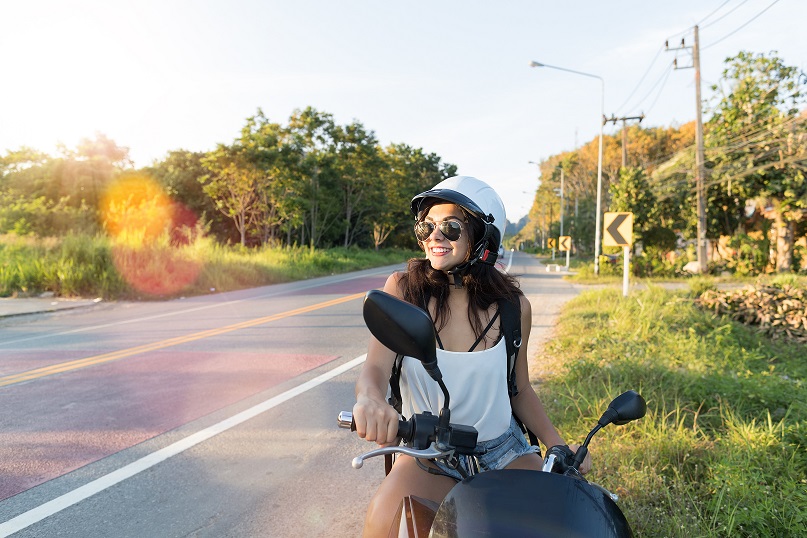
Vietnam is a beautiful travel getaway to rejuvenate your mind and life. However, before taking the trip, there are certain essential things you need to know about the place for proper planning and a smooth experience.
There are a variety of options for means of transport in Vietnam which work on the shared basis. You can travel by hop on- hop off buses which run along the major routes of the key cities of the country. You can also find deluxe sleeper buses and Cylo a.k.a. Rickshaws in Vietnams. There is a faster mode of transport as well, and that is the ‘shared vans’ which run across the cities.
If you want a more smooth and comfortable ride, go for a personal taxi which will take you to all the places you want to go, from tourist spots to the airport. The most famous and reliable taxi services in Vietnam are MAI LINH OR VINASUN TAXIS.
Motorbikes are a popular mode of transport in Vietnam. These motorbikes make for great adventure companions. However, one must always be safe with motorbikes so as to avoid accidents. Make sure you take all precautions and carry appropriate road safety gear with you. A helmet is a must here.
The weather in Vietnam is highly unpredictable. It varies multiple times in a day. The morning might be sunny, but you can expect rains at any time of the day. Thus, be sure to pack an umbrella or raincoat to avoid getting drenched in the rains. The weather also changes across the country, which means it might be snowing in Sapa, but the sun would be blazing in Phu Quoc so prepare your itinerary accordingly.
In cities like Ho Chi Minh and Hanoi, the traffic is really chaotic and crazy. If you are someone who is traveling to an Asian country for the first time, be prepared to be baffled. There are scores of motorbikes on the road accompanied by a lot of honking. Be careful while you cross the streets. Do not panic and maintain a slow and steady pace all throughout so that the riders and drivers know you are crossing the street.
Apart from the picturesque tourist places, one thing that is going to make your trip worth is the Vietnamese food. The food in Vietnam is very delicious with multiple options for vegetarians as well. You should go for some of the famous Vietnamese dishes like the Goi Cuon and Banh mi. There is a reason Vietnam is called a paradise for the foodies.
Accommodations in Vietnam are plenty with the majority of them being cheap and clean. The most popular types of accommodations are hostels and hotels. The hotels here are luxurious with all the amenities, some even have the exquisite rooftop bars. The hostels of Vietnam are equally good. They are way too cheaper and cleaner with all the basic amenities. The staff here is warm and hospitable.
Tourists often go gaga over the connectivity of WIFI in almost every major city of Vietnam. It is everywhere and the reception is simply awesome. So, if you have any bookings to do or any important work to complete, you will find WIFI wherever you go.
How to get Vietnam Visa on arrival? This method works best for business executives or constant travelers who are not present in their home countries at the time of applying for the visa. This makes it hard for them to get the Vietnam visa approval and the visa from the embassy. Thus, they opt for Visa on arrival. Getting Visa on arrival is gaining more and more popularity owing to its effectiveness. Following is the Vietnam Visa process for this type of visa:
There are several companies which provide their services for completing the Vietnam Visa process. You fill out a form online through your company, rest every other aspect of the Vietnam Visa process is taken care of by the company. You finally receive a Visa approval letter through the mail, which you need to carry it to the Airport when you land in Vietnam. This is the smoothest way to get your Vietnam Visa process done in less time.
For any assistance on how to get Vietnam Visa or if you want to get your Vietnam Visa process done in a hassle-free way, you can reach out to us at www.visa-vietnam.org. We are a leading company in helping tourists complete their Vietnam Visa process in the most seamless manner possible.
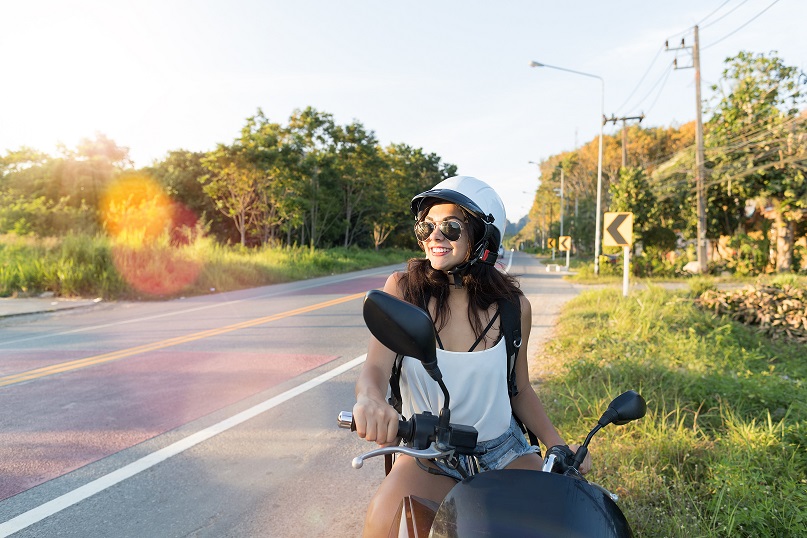
Some travelers rave about the cheap flights in Vietnam. Others swear by the convenience of the hop-on hop-off bus system. However, when it comes to traveling Vietnam, there’s really no method that can compare to exploring the country by motorbike. If your goal is to get off the beaten tourist track and experience Vietnam for what it really is, then don’t pass up the chance to make your trip through Vietnam an unforgettable and everlasting experience!
FINDING WHEELS
So, if you’re up for the motorbike journey then first order of business upon entering Vietnam is finding a bike.
Buying
If you’re looking to buy, your best bet is to hang around the popular youth hostels in Hanoi or Ho Chi Minh. These two cities are the most popular starting/finishing points for those motorbiking the country. Because motorbiking the country has becoming increasingly popular, you’ll likely find other travelers selling their motorbikes after they’ve completed the journey.
If not, check the hostel’s bulletin board for flyers advertising bike sales. The benefit of buying a bike is being able to turn around and sell it to someone else after you’ve completed the journey. The negative aspect is not knowing the full or true condition of a bike you’re buying off a perfect stranger. Of course, you’d like to think that there’s some ‘’traveler comradery’’ between the two of you, but at the end of the day, they’re just trying to make a few bucks. Bottom line: if you don’t have a good feeling about the bike or the person selling it, don’t buy it. Also, don’t buy anything without first driving it first.
Renting
If you can’t find a suitable option or feel wary about buying a bike in an unknown condition, don’t despair. There’s another way. Check the motorbike rental shops around the city. Some will allow you to rent bike in their shop and return it in a partner shop somewhere else. The drawback is you won’t be able to sell it to make your money back at the end of the trip. On the plus side, renting means you’re more likely to get a bike that’s in reliable condition.
WHERE TO START
The two most logical starting points to a motorbike trip through Vietnam is either the north in Hanoi or the south in Ho Chi Minh. Because Vietnam is a long, relatively thin country, starting at one end or the other assures seeing the most. You can start at either end and hit the same places - it makes no difference.
Below, we’ve outlined an easy-to-follow itinerary, starting in Hanoi and finishing in Ho Chi Minh.
ITINERARY
From Hanoi, this schedule can be comfortably completed within a 2 ½ - 3-week timeframe. Factor in roughly 3 nights in each destination:
DRIVING TIPS & INFORMATION
*************************************
Vietnam is really a special country and a motorbike tour is definitely the way to experience it. Taking to the streets allows you to see a different side of the country - a more genuine, simple, and charming part that remains uncovered by the majority of travelers who choose to travel by bus or plane.
Of course, motorbiking comes with risks. However, we doubt you’ll regret the decision to step outside your comfort zone, onto a bike, and into a whole new way to travel.
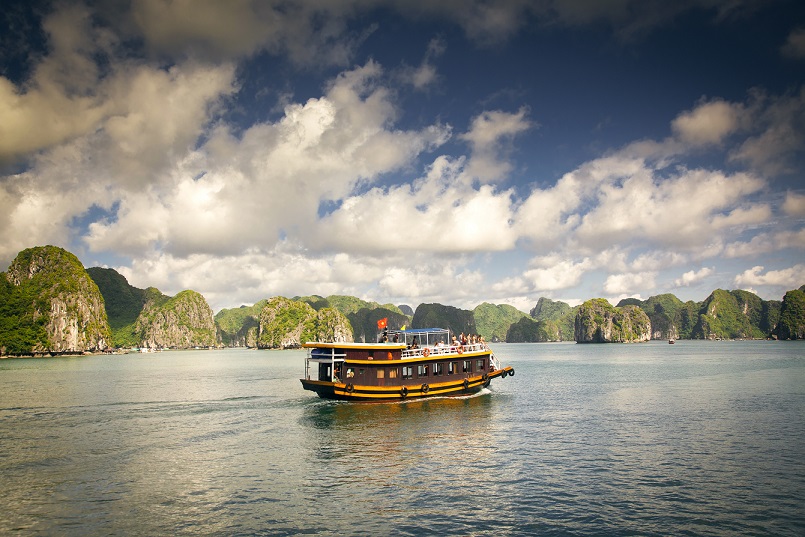
As the word suggests, Halong is a Bay region in the northeast of Vietnam that encompasses more than 1500 islets in the region; some of which are karst outcrops and others covered with dense jungles and caves. It can be accessed from Hanoi or Haiphong by land or air. The picturesque bay is dotted by unique karst outcrops, and islands weathered over centuries to unique shapes.
The beauty of the Halong Bay is considered a French discovery. The name has is its origins in reports by French army men who thought they saw “dragons” in the Bay. So “Ha Long” essentially means the “Bay of the Descending Dragons”, although tourists are more likely to say “Halong”.
Halong Bay is one of the many UNESCO World Heritage Sites across Vietnam, and happens to be the most beautiful. Spectacular limestone karst seascapes, a scatter of islands and diverse topography blessed with natural wonders; make the Halong Bay area a magical experience for tourists.
Although any time is a good time to visit Halong Bay, the months of December to January are most popular with tourists who wish to avoid the hot humid summers of Vietnam. However, it may be too cold for getting into the waters. The warmer months on the other hand, are great for swimming and other activities. So consider October to April a generally good time to visit Halong Bay.
Cannon Fort – This is the place to go more for the spectacular sweeping views of the Cat Ba Archipelago, than the historical relics.
Cat Ba Island – Once you have whetted your appetite with the views from Canon Fort, you will want to visit Cat Ba, the largest island in the archipelago. This is a great place to visit for adventure travellers, as the protected park offers opportunities for climbing, hiking, kayaking and seeing the golden headed Langurs, an endangered primate. If you are looking for a swim, the Cat Co beaches are a great place to cool off.
Lan Ha Bay – Southeast of Cat Ba is the Lan Ha Bay that boasts more than 300 karst islands and outcrops and some fine isolated beaches. It is best visited by boats and kayaks.
Bo Hon Island – It is a beautiful island with an elaborate cave system featuring some must-visit caves. Towering peaks blend with caves and sheer cliffs, to create a vivid imagery. The diverse ecosystem hosts unique plant life and wild animals. The Hang Trong Cave is a must-see for a unique experience. Wide and open-ended on both sides, the wind blows through the cave and stalactite formations to produce a quaint sound of faint drumbeats. Hang Sung Sot Cave is a popular haunt with the tourists for the legends associated with the fertility symbol of pink rock. It is reached from your boat by about a hundred steps and the Bay views are worth the climb. Take advantage of low tides to row over or kayak under the low-height Luon Cave for a wonderful experience. Sung Sot or Surprise Cave is a long and wide cave, ideal for those who feel claustrophobic in smaller spaces.Close to the Bai Chay Beach is the Virgin Grotto or the Trinh Nu Grotto, dominated by the stone statue of a girl looking towards the sea. Right opposite is the Trong (or Male) Grotto with the stone statue of a boy facing the Trinh Nu Grotto. Like most other caves, this site also resonates with legends from the past, that add to the mystery of these stunning caves.
Dau Go Island – The Dau Go Cave is the chief attraction of the island, for its soaring heights and diverse flora, stone pillars and stalactite formations.There is another popular cave, the Hang Thien Cung Cave, known for its unique cauliflower-type limestone growths.
Halong Bay is not merely about natural beauty and photography, but also for land and sea-based activities.
Cruising is the tourist-must-do at Halong Bay for getting up-close with amazing limestone formations, cave systems, and floating villages. You can take a day cruise if you are short on time and see the highlights of Halong Bay. Best options are night cruises that take you out further in the sea to remote islands. Cruises include seafood cuisine, stopovers for swimming and kayaking in lagoons, beach barbeques, and on-board entertainment.
A helicopter tour may perhaps be the most expensive part of your Vietnam travel, with $650 for a round-trip over Halong Bay, but the bird’s eye view of the magnificent seascape and limestone formations are certainly worth the money spent.
Enjoy the wild beauty if you are a land-based person. Make the most of the tropical flora and fauna endemic to these islands. Let go of the shutterbug in you, and take with you memories of a beautiful location at the other end of the world.
Swimming and relaxing on the many secluded beaches of Halong Bay Islands, is a great way to unwind in beautiful settings, with turquoise blue clear water and bleached white coral sands that you find nowhere else.
Kayaking, diving or snorkelling are popular activities, with local tour operators guiding you along the way and renting out equipment.
Enjoy seafood cuisine dominated by local crab, squid, clams, and prawns, Food distinctive to Halong Bay are Sat Sung sandworm, Sam lobsters, Ha oysters, and the popular three-spined Stickleback.
Go shopping for local handicrafts, souvenirs and fruits. Halong Night Market and the many floating markets are some places to check out.

Hiking against the breathtaking views of nature, sampling mouthwatering spring rolls and a bowl of delicious Pho, while immersing in the local culture are just among the many good reasons why you should visit Vietnam. But if you need more reasons on why it’s time to pack your bags and head to this amazing country in Asia, then check out these top 8 reasons why you should visit Vietnam now!
Coffee lovers, rejoice! Vietnam is home to one of the world’s most delicious coffee. A traditional Vietnamese coffee is loaded with a super delicious condensed milk, which probably explains the delicious taste. You can also try other varieties, such as the coconut coffee and egg coffee. It doesn’t matter whether you prefer to drink your coffee hot or cold. The taste is just extremely delicious!
Your trip to Vietnam would not be complete without hiking in Sapa Valley. With the majestic views of Hoang Lien Son Mountains in the backdrop and the scenic Muong Hoa Valley, this hike is something that you will remember for the rest of your life. The hike is also a great way to soak up the local culture since you’ll be passing through small villages and witness how the local tribes there live.
Vietnam is a country that’s been around for more than a thousand years and the passing centuries have molded the country to what it is today. The vibrant culture of Vietnam has manifested in so many ways, from the ancient old temples to the traditional water puppet performances. To soak up Vietnam’s culture scene, consider visiting the country during one of their local festivals, such as during Tet, which is their local New Year.
One of the many reasons why you should visit Vietnam now is to experience the marvelous Halong Bay up close. Located in the northern part of the country, Halong Bay is a beautiful turquoise bay that’s been declared a UNESCO World Heritage Site. It comprises of more than 3,000 islands with different shapes and forms, featuring distinct limestone cliffs that are covered with lush vegetation protruding beautifully from the ocean. If you love nature, then you should head to the Halong Bay now.
If you are up for an adventure, then Vietnam is the best place to visit. Whether it’s sledding down the gorgeous sand dunes of Mui Ne or driving a Vespa down the busy and chaotic streets of Ho Chi Minh and Hanoi, there’s certainly something in Vietnam that every adventure enthusiast will love. Other adventure activities that you can experience in the country include kayaking at the Halong Bay, hiking in Sapa, and many more!
There are so many places in Vietnam that exude a very romantic atmosphere. For instance, you and your significant other can take a walk along the lakeside of Hoan Kiem Lake in Hanoi or perhaps stroll through the beautiful cobbled stone streets of the old town of Hoi An. Whether you are going for a honeymoon or you simply want an escape from your busy work schedules, take your loved one to Vietnam now!
Your dollar will go a long way in Vietnam. Everything in the country is pretty cheap, from the food, accommodation, tours, activities, and more. It’s also cheap and easy to travel from one place to another since there are buses and trains that travel in long distances. So even if you intend to stay in the country for a longer period, you can certainly make the most of your vacation without going beyond your travel budget.
Another good reason to visit Vietnam now is the convenient visa processing. Visa-Vietnam.org allows you to process your Vietnam visa in advance, which greatly saves you from a lot of hassles. Instead of having to visit the embassy of Vietnam in your country to apply for a visa, they will process the visa on your behalf. What’s more, it only costs as low as $8 USD per person.
Nightlife Guide: Saigon

Saigon is home to some of the best nightlife in all of Southeast Asia. In fact, it is famous the world over as a destination to have a great time and party hard. It is continually evolving and growing more eclectic year on year, so it’s good to have an idea what's on offer. Though the city and its nightlife can seem daunting at first, the huge amount of people, local and tourists alike in D1 can put off a lot of people, many find it can get pretty stressful!
So today we will look at some of the top destinations to get you started on your journey in Saigon’s hip nightlife!
Pham Ngu Lao Street
This iconic street is the beating heart of Saigon nightlife located in the backpacker’s area of D1. With many bars and clubs on this street and many more in the lanes and alleys that surround you are never far away from a good time. This is a great place to go when you first visit Saigon, if you are a backpacker you will love the great happy hour deals that the various bars run and if you are looking for something more upmarket you can take to the skies in a cool rooftop bar.
This is the place to go clubbing, watch sport and have some late night food, The bustling streets and bright lights are intoxicating and the beer is too!
Ben Thanh Market
I feel it's a disservice to call Ben Thanh Market just a market, it's more like ten markets in one, although open throughout the day, at night it becomes an even more interesting destination with a great many food stalls opening up. With many souvenirs and treasure’s of Vietnam to get this is a perfect stop to get those gifts for family and friend back home. Remember haggling is almost expected so don’t feel bad to turn down the first price offered to you!
Head to D2
District 2 is a great place to experience a piece of Saigon that is less touristy, considered very much an expat district it has a great many modern bars and restaurants serving crafts beers and great wines from all over the world. The area around Thao Dien has some of the hippest spots in all the city.
These are just some ideas to get you started on your journey through Saigon’s nightlife, remember to stay safe and party hard!
How To Prepare for your Vietnam Trip

Vietnam is a favorite destination among backpackers. For one, it’s a gorgeous country with so many things to offer. Moreover, Vietnam is a super-budget destination, and with only a few hundred dollars in your pocket, you could explore a lot of Vietnam’s amazing destinations. However, Vietnam can also be overwhelming especially for first-timers to the country, and if you don’t come prepared, you could end up missing out on the best things to experience in Vietnam. So here’s how to prepare for your Vietnam trip.
Which Airport you should Land
Vietnam has two International airports, the Tan Son Nhat Airport in Ho Chi Minh and the Noi Bai Airport in Hanoi. Depending on where you’re going in the country, you’ll either land in any of these two airports.
If you want to start your Vietnam trip at the north and explore places like Hanoi and Halong Bay, then you should land at Noi Bai Airport. On the other hand, if you want to begin your journey at the south of the country, such as in Ho Chi Minh, then you should book a flight that goes to the Tan Son Nhat Airport.
Getting Around the Country
If you want to explore the country from north to south or vice versa, the best way to travel long distances is by plane. Otherwise, if you’re trying to save some money and you have ample time to spend to the country, then you can travel by train.
There are taxis at some of the major cities like Hanoi and Ho Chi Minh, however, if you want to save on your transportation, consider renting a motorbike. It’s cheap and you’ll have the freedom to travel anywhere you want to. But remember that you can only drive in Vietnam if you have a valid International driving license.
Where to Stay
You’ll have lots of options for a comfortable accommodation in Vietnam. If you’re on a tight budget, you’ll find that there are plenty of affordable hotels and backpacker hostels that are within your budget. That is, if you don’t mind sharing the room with several other backpackers. If you want to have some privacy, book a private bathroom with toilet. This should cost you an average of $10 per night.
Homestays are also gaining popularity in Vietnam. It’s also cheaper and a great way to learn more about the culture since you get to live with a local.
Currency and Exchange Rate
One of the questions that you probably have is how much money you need to bring to Vietnam for your trip. Of course, this will depend on how long you plan on staying in the country and what are the things that you intend to do there.
To give you an idea, Vietnam’s official currency is dong (VN). 1 USD is around 22,000 VN. Dollars are also accepted in hotels, as well as in some shops and markets, although you could save some money if you’ll exchange your dollars for the local currency.
Currency rates fluctuate from time to time so before your trip, it is best to find out the currency exchange rates so you’ll have an idea on how much you should be given when exchanging your dollars.
Packing Tips
It’s highly recommended to visit Vietnam on a backpack instead of a suitcase especially if you’re staying on budget hotels. A lot of times, budget hotels in Vietnam don’t have any elevators, which can be a nightmare if your room happens to be on the highest floor!
Furthermore, most of the sidewalks in Vietnam are occupied with food stalls and scooters, so it can be difficult to walk while tugging your suitcase along. Moreover, if you have plans to travel all over the country in a train and bus, carrying a backpack makes getting on and off much easier.
It’s also a good idea to research the weather in Vietnam before your trip so you will know the type of clothes you need to pack. Nevertheless, if you ended up packing the wrong type of clothes, shopping for clothes in Vietnam should be cheap.
Vietnam is a truly wonderful country to visit. If you have plans to visit the country, you should start preparing as early as now!
Vietnam Travel Itinerary: 48 Hours in Hoi An
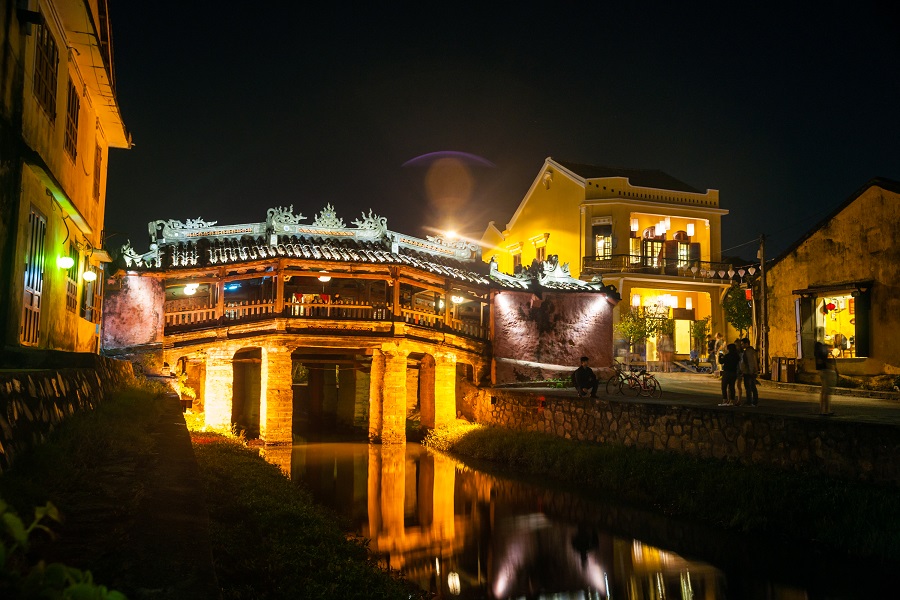
Hoi An, also known as the city of lights, is well known for its colourful lanterns and well-preserved ancient buildings. The Ancient Town on Vietnam’s central coast is the perfect place to relax and unwind. 48 hours in Hoi An may seem like a small amount of time to visit the UNESCO-listed town but you can definitely get the most out of your stay.
Originally a major trading post in the 16th and 17th centuries, you can see a mixture of styles throughout ranging from French-colonial houses to Buddhist shrines and old canals. With a number of areas pedestrianised, the traffic is much more minimal unlike other parts of Vietnam. Due to its size, you can easily explore the town on foot. Here’s a comprehensive itinerary to help you visit the town’s must-see spots.
Day 1
Morning: Biking Tour
The best way to explore the town is by bike, many hotels have free bikes available to use. See Hoi An and its surrounding areas at your own speed with the wind flying through your hair. If you would prefer to follow a guide, there are several packages available throughout Hoi An. Visit the nearby villages and see water buffalos, rice paddies and local Vietnamese people.
Afternoon: Go to an Art Gallery
If you’re interested in learning more about the culture of Hoi An, try and set aside some time to visit the art galleries around the town. There are a number of art galleries around Hoi An where you can view or even buy some art to add to your collection back home. Whether you’re interested in art or photography, there’s something for you. Popular galleries include the Phu Tam Photography gallery, showcasing work by the Vietnamese artist Dong Phu Tam as well as the T&G Art Gallery and Hay Hay.
Evening: Head to the Night Market
Exploring Hoi An at night is a fantastic experience. Before you even head to the night market you’ll be faced with colourful lanterns lighting the way and the smell of freshly cooked food. You can find the night market on the far side of the river that runs through the town. There’s also a number of bars and restaurants in the area. The night market sells souvenirs and plenty of food, so grab your dinner and enjoy views of the Thu Bon River.
Day 2
Morning: Trip to My Son Sanctuary
A UNESCO World Heritage Site, My Son Sanctuary can be reached easily by motorbike or book onto a tour and go with a group. Dating back to the 4th century, the area was home to an independent and unique culture until the 13th century. The impressive ruins and temples are a sight to behold. A remarkable architectural achievement, the site was the political capital of the Champa Kingdom for a long time.
Afternoon: Sightseeing and Shopping in Hoi An Old Town
Hoi An Old Town is filled with beauty and culture, a place that you can easily get lost in for the afternoon. The 16th century Japanese Bridge within Old Town is a popular spot to visit, try to head there earlier as it can get very busy. Head through the winding and narrow streets and soak up the atmosphere. Hoi An is well known for its tailors, so why not pick up a bespoke suit or dress at a fraction of the cost.
Evening: Enjoy Drinks and Dinner
Two days of exploring and sightseeing can really take it out of you. Visit one of Hoi An’s many intimate dining options and delve into incredible Vietnamese food. One of the most popular eateries in Old Town is Morning Glory, offering a range central Vietnamese dishes. Another great option is Minh Tinh Vegetarian Restaurant.
There’s so much to see and do in the city of lights, spend your two days in Hoi An soaking up the natural beauty the area has to offer. Whether you prefer something a little more relaxing and want to include a spa day in one of the many hotels in Hoi An or prefer to spend your time exploring markets and shopping, there’s so much to do.
Essential Vietnam Travel: Nine Things to Know Before Travelling

One of Southeast Asia’s most exciting and popular tourist destinations, Vietnam’s striking landscape and contrasting cities make it a truly magical place to visit. A hotspot for foodies, thrill-seekers and nature lovers alike, there’s something for everyone. Whether you’re visiting the charming capital of Hanoi with its older architecture and narrow streets or heading to a modern and bustling city like Ho Chi Minh, Vietnam is vast and changing throughout.
If you’re in the north, be sure to visit one of the great natural wonders of the world, Ha Long Bay. Known for its clear waters and limestone islands, this one’s definitely a must-visit location. Before you head to Vietnam, whether you’re travelling on a budget or splurging, here are nine essential travel tips to know before you board the plane.
1. Apply for your Visa
Visa’s are top of the list for a reason, you can’t travel without it and it’s so important to get it sorted before you start planning and booking your travel plans. Visa requirements are different for every country, if you’re from the UK and don’t plan on staying longer than 15 days then you don’t need a visa. However, the likelihood is that you will need to arrange your visa in advance. Visa-Vietnam.org can take of everything for you, the online service makes it easy and simple to obtain the right visa for you. Both E-visas and visa on arrival are available, with fees and instructions clearly labelled.
2. Check your Travel Vaccinations
Wherever you’re coming from, always check your recommended travel vaccinations before travelling. Your GP can advise you on vaccinations and recommendations and then you can decide which you are comfortable having. It’s best to book an appointment with your GP 6-8 weeks before travelling.
3. Book Accommodation for your First Night
You can do as much research as possible to check the area that you’ll be staying in but there’s nothing quite like being there and experiencing it for yourself. This is particularly useful with hostels and hotels with fewer reviews, book accommodation for the first night to ensure you like the area. There’s an abundance of hostels and hotels around Vietnam and with sites such as booking.com and Hostelworld, you’ll be able to find somewhere you love to stay.
4. Pack the Right Clothes
Vietnam is hot the majority of the time but depending on the time of year you’re travelling, it could also be the rainy season. Make sure you pack the right clothes, shorts and t-shirts are widely accepted throughout Vietnam but pack clothes that cover shoulders and legs also for visiting sacred areas and temples.
5. Hostels or Hotels?
The word hostel no longer envisages a small room full of people with one bathroom. Hostels are now a bustling epicentre for travellers to meet, play ping pong and swim in the private pool. They have really come along way, both private and dorm rooms are available so if you’re looking to meet people and have fun then hostels are for you. Hotels are also a great option, much quieter and can range in price from extremely budget-friendly to luxurious.
6. How to Cross the Road
Vietnam roads are chaotic and crazy, crossing the road can be tough. The majority of locals and tourists ride motorbikes which means the roads are full of them. Once you get into the habit of crossing the roads, it gets better. If there are no traffic lights, the best thing is to walk slowly and the bikes will move around you.
7. Watch Your Belongings
Vietnam is a welcoming place and you do feel safe. However, with any place you need to be aware of the people around you and watch your belongings. Tourists are obvious targets with expensive cameras and phones. In crowded areas, keep your bag and valuables around your front and don’t leave them unattended.
8. Learn to Haggle
Haggling is a part of Vietnamese culture and could really help your travel budget go further. You can barter on almost anything including fruit, vegetables and souvenirs. Once you get the hang of it, it can be a lot of fun.
9. Vietnamese Food
Well known for its incredible food, Vietnamese dishes are filled with amazing flavours and ingredients. Street food, in particular, is a massive part of Vietnamese culture and local life. Pull up a very small plastic stool on the side of the road and dive into a delicious meal. It’s best to buy from stalls where the food is made fresh and hot in front of you.
Vietnam is a fascinating place to visit filled with welcoming locals, delectable food and stunning landscape. Whether you’re a history buff, adrenaline junky or avid photographer, Vietnam is a must-visit country and should be on everyone’s bucket list.